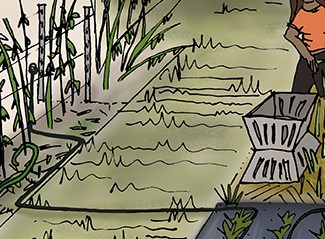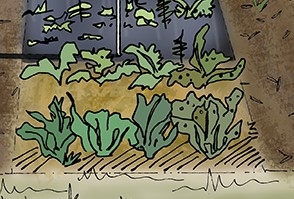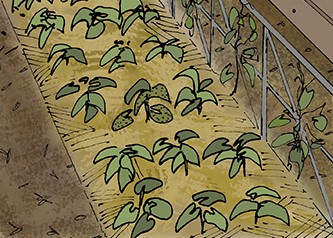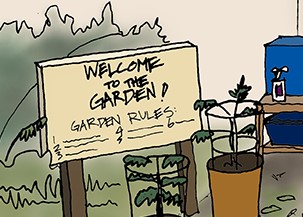Simple practices to reduce disease pressure in gardens
Use these preventative maintenance strategies to keep your plants healthy.
| Use clean seed to prevent new pathogens from entering the garden. If using saved seed, treat it with hot water (find specific instructions for temperature and duration online). | |
| Rotate the plots where crop families are planted. For example, after planting tomatoes, wait 3 years until you plant solanaceous crops in the same spot. Containers can help with rotations in small gardens. | |
| Clean your shoes before entering the garden, especially if you have recently been in another garden. | |
| Wash your hands regularly, and clean and sanitize your tools. Pathogens can travel on shovels, trellises, and other equipment. | |
| Use drip irrigation or careful hand watering when possible to add water near the roots of plants without splashing water onto the leaves. | |
| Mulch (either straw or plastic) prevents pathogens from splashing up from the soil. | |
| Grassy walkways between plots can help to prevent water movement across plots. | |
| Trellises support plants and provide better airflow through the canopy. Clean and sanitize trellises each year. | |
| Remove infected plants and plant tissues to prevent the spread of pathogens to healthy plants. Only remove diseased leaves when plants are dry, and no rain is forecasted. | |
| Identify diseases using tools like What's Wrong with My Plant or Ask Extension. You may need to send a sample to the plant disease clinic. Once you have a diagnosis, seek resistant varieties the following year. | |
| Keep compost away from garden beds, and make sure it is fully composted before applying it back to growing areas. | |
| In public and community gardens, inform gardeners and visitors about these best practices, especially related to sanitation. |
Reviewed in 2021














